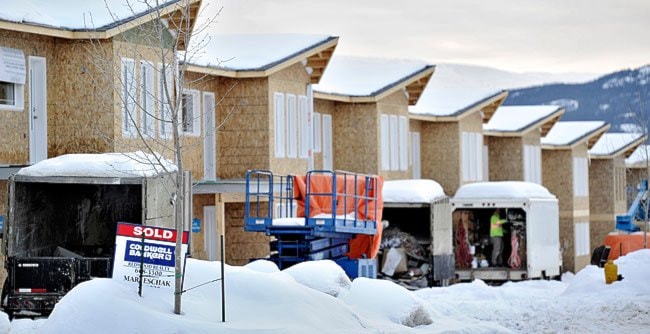The Yukon government is selling a country residential lot in Whitehorse for at least $200,000 - nearly double the price it fetched when it first hit the market five years ago.
Officials say they’re merely trying to match soaring real estate values, but the Whitehorse Chamber of Commerce warns this practice of marking up lot prices only makes the Yukon’s housing crisis worse.
“We’re concerned about the inflationary trend that’s setting,” said Rick Karp, the chamber’s president.
With the average home in Whitehorse now selling for $430,000, the Yukon’s capital runs the risk of going the way of Fort McMurray unless governments intervene, said Karp.
“We don’t want to get into a situation where a mobile home is selling for $350,000, where the cost of living is so high,” he said. “It just brings in so many problems.”
Among employers there is “disbelief” over property prices, said Karp. With little to rent and home prices growing more unaffordable, it’s becoming increasingly hard to lure workers to the city.
“What do they do?” asked Karp of workers. “They’re forced to get into a rental accommodation that isn’t suitable, bunk out wherever they can, or they’re forced to leave.”
Meanwhile, young, would-be homeowners are increasingly being priced out of the market, said Karp. “Hardworking people who are renting now, if they want to move into their first home, they can’t do so.”
The first part of Whitehorse’s next big, new neighbourhood, Whistle Bend, won’t be on the market until this fall. Houses won’t be built and occupied there until the following year.
Most developments within city limits are designed and sold by the city. And what lots are sold by the territory aren’t typically sold for such exorbitant markups as the pricey country residential lot in question.
It’s a 1.44-hectare parcel in the Whitehorse Copper subdivision. Today it will be sold to the highest bidder, with the starting price at $200,000.
When the lot first went up for sale by lottery in 2007, it was marked for $101,000, said John Cole, the Yukon lands branch’s manager of client services.
The first prospective buyer declined to pick up the property so it was added to another lottery in 2008. That time no one signed up to buy the lot.
In 2009, the lot was sold over the counter, but the buyer returned it in 2011.
Officials decided to appraise the lot later that year. It was deemed to be worth more than $200,000. Just how much more, Cole won’t say, because of the upcoming tender.
But officials didn’t need to mark up the lot. Regulations merely say the territory must recoup the cost of development.
Four lots for sale in the Ingram subdivision are marked up by a modest 3.5 per cent above development costs. That means a lot sold for $80,532 will allow the territory to pocket $2,769.
By contrast, the Whitehorse Copper lot has been marked up by nearly 100 per cent. But that’s in keeping with how the territory typically handles lots that have languished for several years, said Cole.
“We thought it would be fitting to put it at market value,” he said. “It’s a matter of trying to be fair with the value that’s there. I think a lot of people tend to forget the land that’s being sold is Yukoners’ land to start with.”
That’s a non-starter with Karp.
“Government isn’t in the business of making money,” he said. “Government’s in the business of providing.”
The Department of Community Services shares responsibilities for pricing lots although it wasn’t involved in the decision to double the price of the Whitehorse Copper lot.
“The Yukon government strives to keep land affordable, and at the same time, tries to prevent significantly undercutting existing market values,” said spokesperson Brenda Wale.
“Blended pricing, which is above development cost but below market value, is used to minimize the impact on the marketplace.”
Development costs vary considerably, depending on the distance of the location from existing utilities and roads, and other factors.
Lots for sale in Haines Junction, for example, are cheaper, in part, because they don’t need the sidewalks and gutters expected in Whitehorse, she said.
Occasionally, features prove pricier than expected. In January, it came to light the territory had spent $1 million to install two culverts to keep moose off the road in the Grizzly Valley subdivision.
That caught the attention of the editors of Maclean’s magazine, who featured the spending item in an article entitled “99 stupid things the government spent your money on.”
Premier Darrell Pasloski promised during the territorial election he’d make the creation of affordable housing a priority. To do so, the government solicited proposals from developers for a Mountainview lot in December.
“Here it is March,” said Karp. “I’m sure they have an idea of what to do. Let’s get some action going. It’s almost building season.”
At the heart of the problem, said Karp, is the failure of the territorial and city governments to maintain a two-year inventory of land for sale since 2006. Predictably, housing prices have shot up since then.
Officials’ references to a “market” in land is misleading, he said, when government controls the entire supply.
Contact John Thompson at
johnt@yukon-news.com
